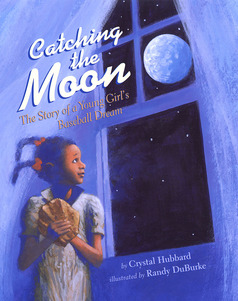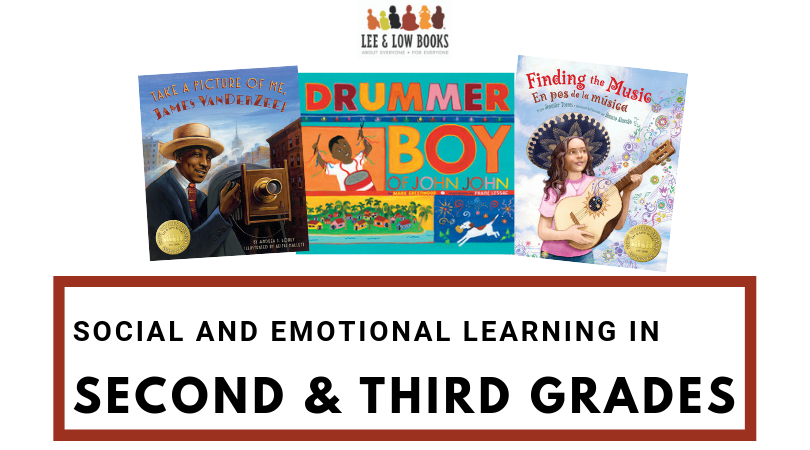Social Emotional Learning (SEL) is a hot topic, but it’s certainly not new. Skills like empathy, cultivating and maintaining positive relationships, recognizing and managing emotions, problem solving, approaching tasks with grit and perseverance, and taking on others’ perspectives have always, and will always, be crucial to kids’ success. Research shared by CASEL reports that SEL programs lead to “immediate improvements in mental health, social skills, and academic achievement,” and “up to 18 years later, students exposed to SEL in school continue to do better than their peers on a number of indicators: positive social behaviors and attitudes, skills such as empathy and teamwork, and academics.” SEL is certainly worthy of time and attention from those who support children’s development.
Books are valuable tools for guiding conversations about SEL topics. Children can examine and learn from characters’ actions and experiences and relate them to their own. Of course, book selection is key. When kids see both themselves and others in diverse books, it says, “You matter. Reflect on your experiences.” and “Others matter. Listen and learn.” Therein lies the heart of SEL.
As students grow and change, so do their social emotional learning needs. Linking diverse books to SEL goals and challenges across different ages is a powerful way to support students as they navigate each developmental stage. This blog series explores how diverse books can be used to support social emotional learning at different grade levels.
We’ve all seen examples of a child’s capacity for persevering to meet a goal, from the toddler who emphatically insists “I’ll do it myself!” to the new reader’s slow-but-steady tackling of a challenging book. The ability to invoke a short-term burst of determination is important at all ages and stages, but there’s a particular skill set needed to set and work towards long-term goals.
It’s often challenging for very young children to conceptualize processes that happen over time, but by second and third grade, children are more able to see the long game when it comes to working towards goals. Sharing diverse books about individuals that exemplify grit provides students with examples of how this “climbing” towards long-term goals might look. It also encourages discussion of their own goals and plans for working towards them. (It’s important to note: For second and third graders, “long-term” can have a range of meanings, from a multi-part class assignment, to a school-year-long challenge, to a life-long pursuit!)
 There are many fantastic book options available related to grit for this age group, and it’s important to share a variety; this shows students that grit is applicable across many contexts and helps each student encounter personally-meaningful examples. Examining a variety of titles related to grit also shows how it’s a concept applicable to personal interests, learning and academics, and to the broad practice of living up to one’s values. Here are some age-appropriate titles related to each of these areas:
There are many fantastic book options available related to grit for this age group, and it’s important to share a variety; this shows students that grit is applicable across many contexts and helps each student encounter personally-meaningful examples. Examining a variety of titles related to grit also shows how it’s a concept applicable to personal interests, learning and academics, and to the broad practice of living up to one’s values. Here are some age-appropriate titles related to each of these areas:
Friendly Competition:
While winning is certainly not the only application for grit, stories about competition are a relatable entry into the topic. (What second or third grader doesn’t enjoy winning?) Drummer Boy of John John and The Turtle Ship both share a child’s journey as they attempt to win a contest that promises a meaningful prize to the winner. Catching the Moon: The Story of a Young Girl’s Baseball Dream, is based on the true story of Marcenia Lyle’s efforts to earn a spot in a prestigious baseball summer camp, despite gender and racial biases. After sharing these stories, discuss the obstacles the characters faced, and their responses to those obstacles. Draw parallels to obstacles in students own lives.
Personal Interests:
 Stories about individuals who committed at a young age to immersing themselves in knowledge on a subject are helpful to share examples of grit when working towards academic and knowledge-building goals. Take a Picture of Me, James VanDerZee highlights James VanDerZee’s self-driven learning about photography. Honda: The Boy Who Dreamed of Cars chronicles Soichiro Honda’s study of auto mechanics. (A new chapter book biography is also available as a companion, The Story of Car Engineer Soichiro Honda.) To help students make connect their own learning journeys to these examples, discuss questions like “How did each person’s interest get sparked? How did they fuel their own passions? How did others help? Have students write about goals related to their own passions. Brainstorm possible action plans for achieving them.
Stories about individuals who committed at a young age to immersing themselves in knowledge on a subject are helpful to share examples of grit when working towards academic and knowledge-building goals. Take a Picture of Me, James VanDerZee highlights James VanDerZee’s self-driven learning about photography. Honda: The Boy Who Dreamed of Cars chronicles Soichiro Honda’s study of auto mechanics. (A new chapter book biography is also available as a companion, The Story of Car Engineer Soichiro Honda.) To help students make connect their own learning journeys to these examples, discuss questions like “How did each person’s interest get sparked? How did they fuel their own passions? How did others help? Have students write about goals related to their own passions. Brainstorm possible action plans for achieving them.
Values:
Discussing the role of grit in embodying one’s values through one’s actions, or “walking the walk,” is a lofty topic for second and third grade, but it’s an important conversation to begin at this age, and continue as students grow. Finding the Music/En pos de la música provides a relatable context for broaching the topic. After breaking a family heirloom instrument, Reyna makes a determined effort to fix it, demonstrating her commitment to both repairing a mistake and honoring her family in the process. Many students will be able to relate to these values. After reading, ask, “What kind of person do you think Reyna wanted to be? How did her actions show this?” Refer back to characters from titles above, as well. Ask, “Which character traits helped the people in these stories achieve their goals? How did their actions reflect those traits and their values?” Encourage students to make connection to their own lives and actions.
Books offer so many opportunities for social emotional learning in second and third grade, and at all ages and stages. For more ideas about supporting social emotional learning using diverse books, check out Lee and Low’s Social Emotional Learning Diverse Book List for Grades PreK-8. Also don’t miss the recording of the webinar Using Diverse Books to Support Social and Emotional Learning with Katie Potter, Lee & Low’s literacy specialist.
More in this series:
Diverse Books for Social Emotional Learning in Preschool
Diverse Books for Social Emotional Learning in Kindergarten
Diverse Books for Social Emotional Learning in Grade 1
 About the Author: Lindsay Barrett is a former elementary teacher and literacy nonprofit director. She currently works as a literacy consultant and stays busy as a parent of four children under six. Find out more about her work at lindsay-barrett.com.
About the Author: Lindsay Barrett is a former elementary teacher and literacy nonprofit director. She currently works as a literacy consultant and stays busy as a parent of four children under six. Find out more about her work at lindsay-barrett.com.



Two others that might work for this kind of list (they share the stories of women that have been marginalized due to their gender and in one case, disabilities, rather than their race or ethnicity) that my kids and I love:
Nature’s Friend: The Gwen Frostic Story by Lindsey McDivitt – overcame both physical & learning disabilities to achieve success as an artist and designer
Shark Lady by Jess Keating – a woman pursuing her passion for sharks in a male-dominated field